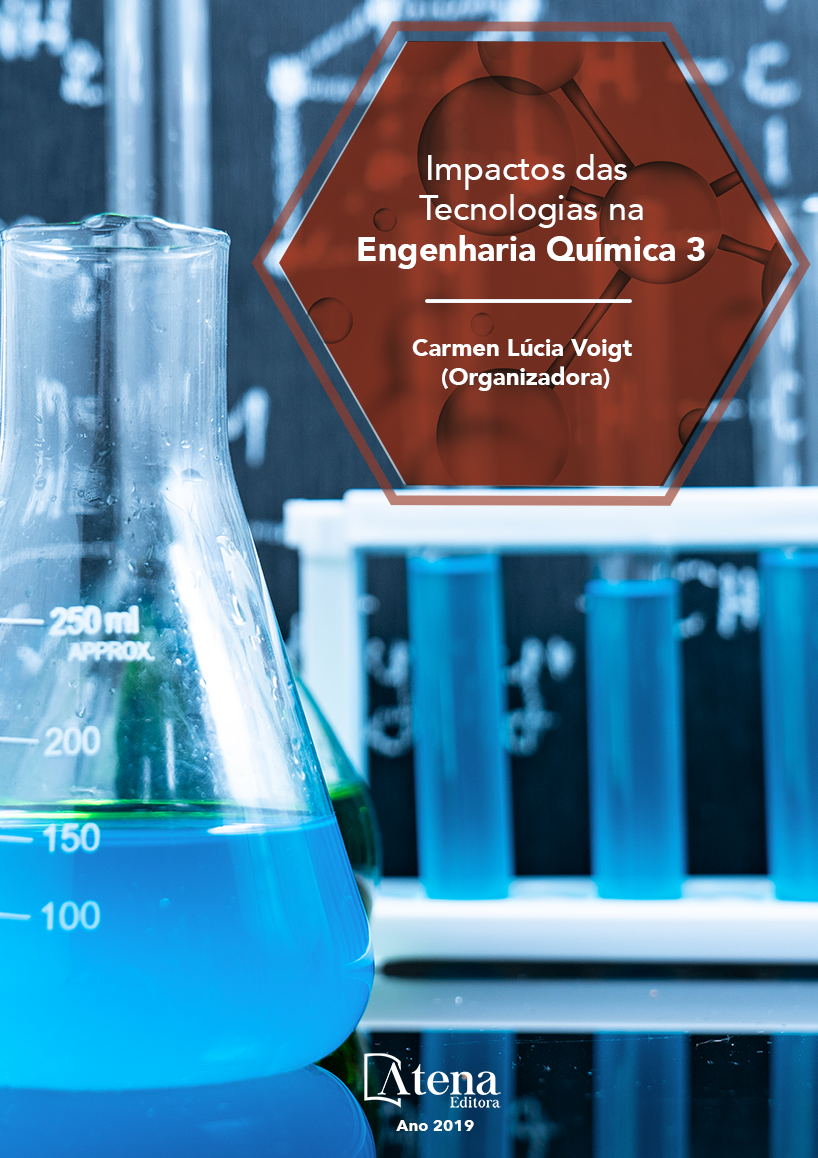
AVALIAÇÃO DA DEGRADAÇÃO FOTOCATALÍTICA, UTILIZANDO TiO2 e ZnO, DO ANTIOBIÓTICO METRONIDAZOL (MTZ) A PARTIR DA ESPECTROFOTOMETRIA
O objetivo deste trabalho foi avaliar
a degradação do Metronidazol (MTZ) a partir
da fotocatálise, utilizando diferentes doses
dos catalisadores ZnO e TiO2 (1,0 g L-1 e 1,5
g L-1), tempo de contato e concentração inicial
de MTZ. O estudo foi realizado com soluções
padrões considerando duas concentrações do
MTZ, 6 mg L-1 e 24 mg L-1. Os experimentos
foram conduzidos em foto-reatores em escala
laboratorial utilizando fonte artificial de UV em
um período de 120 minutos. A avaliação da
presença e concentração do MTZ, bem como
os resultados após a fotocatálise, foi realizada
através da técnica de espectrofotometria
UV-vis. A atividade catalítica de ambos os
catalisadores indica que o ZnO apresenta
maiores taxas de oxidação que o TiO2 quando
ambos os catalisadores foram comparados nas
mesmas condições. Além disso, foi possível
verificar que as concentrações do catalisador e
do MTZ influenciam diretamente no resultado,
sendo necessário utilizar uma quantidade
ótima dos dois para que não haja diminuição
na degradação do MTZ. Por fim, o UV/ZnO foi
identificado como uma técnica promissora para
a remoção de antibióticos com alta eficiência
em um tempo de reação relativamente curto e o
melhor resultado foi encontrado no experimento
com MTZ 6 mg L-1 e ZnO 1,0 g L-1.
AVALIAÇÃO DA DEGRADAÇÃO FOTOCATALÍTICA, UTILIZANDO TiO2 e ZnO, DO ANTIOBIÓTICO METRONIDAZOL (MTZ) A PARTIR DA ESPECTROFOTOMETRIA
-
DOI: 10.22533/at.ed.31919010433
-
Palavras-chave: Antibióticos, metronidazol, fotocatálise heterogênea, espectrofotometria UV-Vis
-
Keywords: Antibiotics, metronidazole, heterogeneous photocatalysis, UV-vis spectrophotometry
-
Abstract:
The aim of this study was to
evaluate de degradation of Metronidazole (MTZ)
from photocatalysis using different catalyst
dosage of TiO2 and ZnO (1,0 g L-1 and 1,5 g
L-1), contact time and initial MTZ concentration.
The degradation of MTZ was performed from
standard solutions with a concentration 6 mg L-1
and 24 mg L-1 of antibiotic. The experiments
were conducted in laboratory scale photoreactors
using artificial source of UV in a period
of 120 minutes. An evaluation of the presence
and concentration of metronidazole, as well as
the results after photocatalysis, was performed
through the UV-vis spectrophotometry
technique. The catalytic activity of
both catalysts indicates that ZnO presents a higher oxidation rates than
TiO2 when both catalysts were compared under the same conditions.
In addition, it was possible to verify that the concentrations of the catalyst and the MTZ
directly influence the result, being necessary to use an optimum amount so that there
is no decrease in the degradation of MTZ. Finally, UV/ZnO is identified as a promising
technique for the removal of antibiotic with high efficiency in a relatively short reaction time
and the best result was found in the experiment with MTZ 6 mg L-1 and ZnO 1.0 g L-1.
-
Número de páginas: 15
- Luciane Pimentel Costa Monteiro
- Leandro Vahia Pontual
- Luiza Barbosa Petersen Mendes


